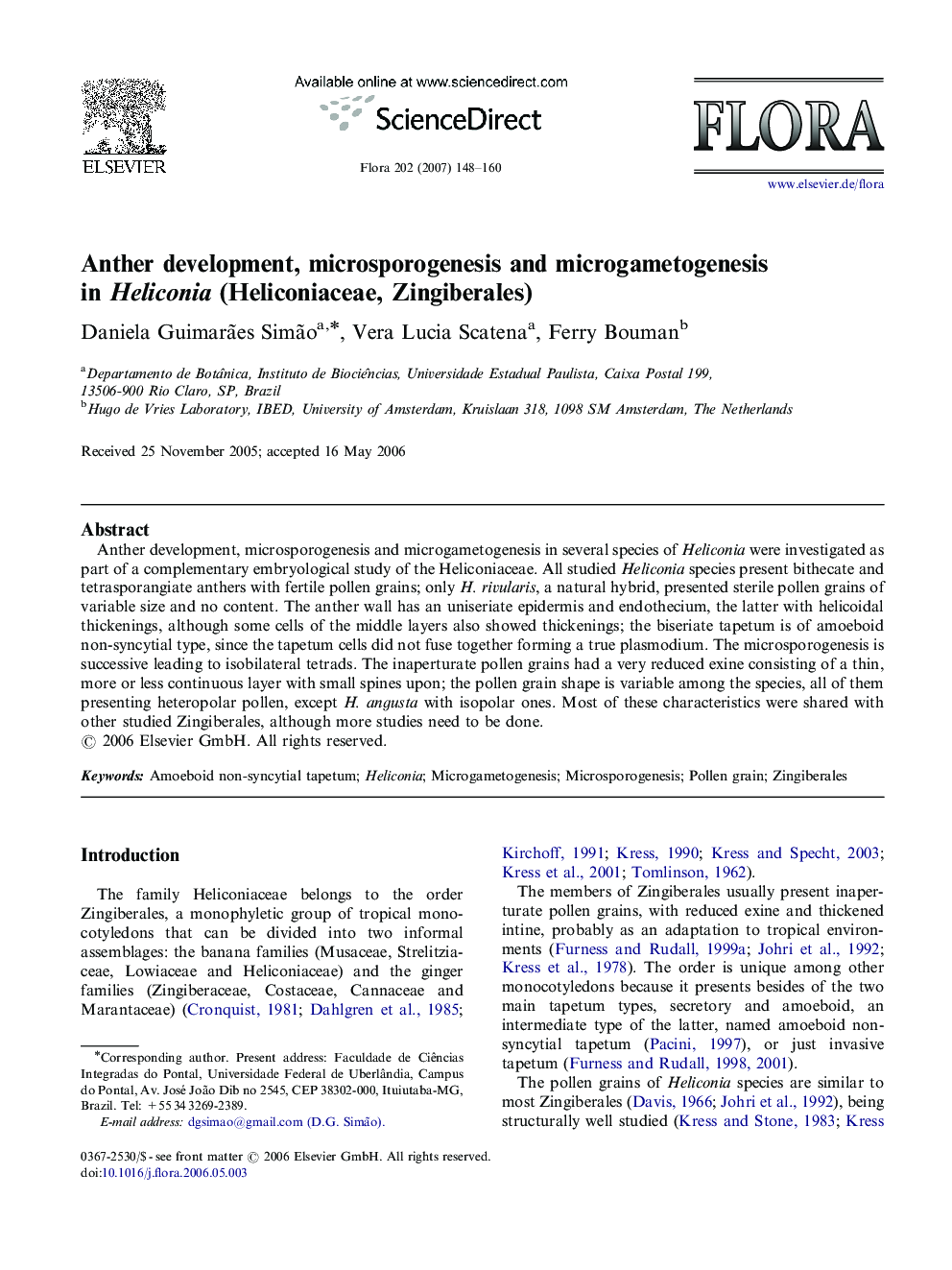| Article ID | Journal | Published Year | Pages | File Type |
|---|---|---|---|---|
| 2180177 | Flora - Morphology, Distribution, Functional Ecology of Plants | 2007 | 13 Pages |
Anther development, microsporogenesis and microgametogenesis in several species of Heliconia were investigated as part of a complementary embryological study of the Heliconiaceae. All studied Heliconia species present bithecate and tetrasporangiate anthers with fertile pollen grains; only H. rivularis, a natural hybrid, presented sterile pollen grains of variable size and no content. The anther wall has an uniseriate epidermis and endothecium, the latter with helicoidal thickenings, although some cells of the middle layers also showed thickenings; the biseriate tapetum is of amoeboid non-syncytial type, since the tapetum cells did not fuse together forming a true plasmodium. The microsporogenesis is successive leading to isobilateral tetrads. The inaperturate pollen grains had a very reduced exine consisting of a thin, more or less continuous layer with small spines upon; the pollen grain shape is variable among the species, all of them presenting heteropolar pollen, except H. angusta with isopolar ones. Most of these characteristics were shared with other studied Zingiberales, although more studies need to be done.
